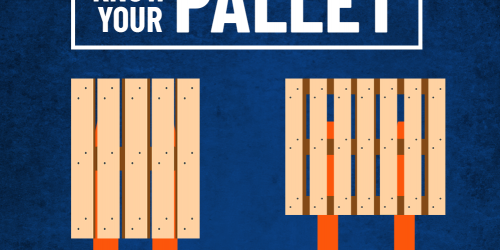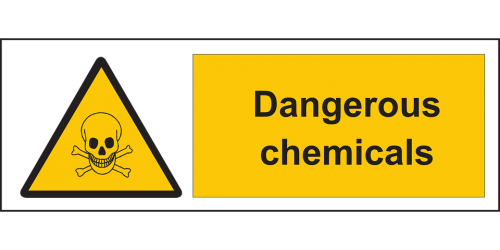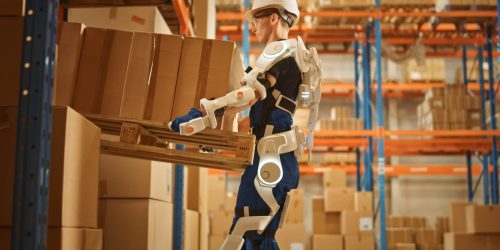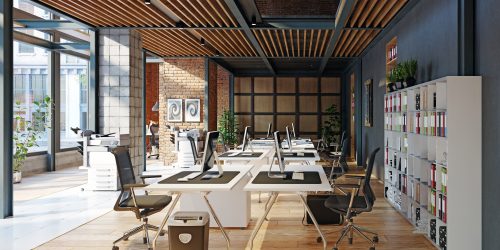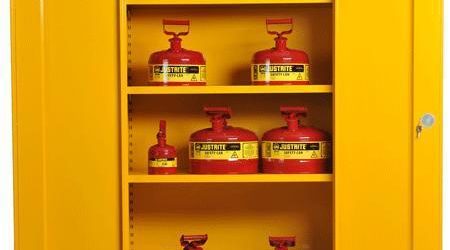Purchasing guide: Choose your site PPE with Manutan EXPERT
Construction sites are where workers are most exposed to occupational accidents. As an employer, you must implement a suitable risk management policy to create a safe working environment. The use of personal protective equipment (PPE) is regulated and only comes into play when prevention and collective protection are no longer sufficient to cover the risks. In this article, you will find how to choose the appropriate types of PPE for your teams working on construction sites.
What is the purpose of site PPE?
PPE stands for personal protective equipment. It is part of a company’s overall approach to employee health and safety.
In countries of the European Union, the employer is responsible for implementing measures to ensure the health and safety of employees. They must set up an occupational safety management policy that involves risk assessment, incident prevention, and employee training.
When identified risks cannot be completely eliminated, collective protective equipment (CPE) is provided to secure the workplace. CPE does not only protect workers but also people near the risk area (visitors, inspectors, etc.). If installing collective protection equipment is impossible, employers must resort to personal protective equipment (PPE). It is common for CPE and PPE to be used simultaneously on construction sites, each covering a specific risk.
Nowadays, innovation is strengthening companies’ safety-at-work policies in several areas. For example, data analysis from a construction site can help anticipate risk situations.
Construction site PPE: What are the regulations?
If personal protective equipment is particularly used on construction sites, it is because the construction sector has always been affected by work accidents. In 2019, it recorded the highest accident rate per 100,000 workers. In the EU, 15 to 30% of workers are exposed to safety risks such as excessive noise, vibrations, dust, high or low temperatures, chemicals, or biological agents. European Parliament Regulation 2016R425 encourages each stakeholder in the supply chain to ensure PPE compliance. By ensuring the optimum quality of its products, Manutan EXPERT is showing its commitment to worker safety. Manutan EXPERT has developed a range of PPE that protects all employees from head to toe, with over 50,000 products from more than 70 brands.
Choosing the right construction site PPE
Site PPE must be chosen to suit both the work to be carried out and the person to be protected. Workers should not be hindered in their movements or feel discomfort. To make the right choice, it is also essential to consider the different types of construction site PPE that will be worn simultaneously.
Hearing protection
There are three criteria to consider when choosing ear defenders. First, the level of protection should be proportional to the intensity of the noise workers are exposed to. Excessive protection isolates workers from their environment, whereas certain sounds can warn them of nearby hazards or manoeuvres being carried out by colleagues. Therefore, it is necessary to analyse the noise level to choose the best ear protection.
Moreover, when communication between workers is needed, it is possible to supplement the hearing protection with a microphone. Some protection devices are designed to block specific sound waves while still allowing for a conversation to be heard.
Finally, the chosen protection must be comfortable and compatible with other construction site PPE such as helmets or safety glasses.
Head and face protection
The head and face protection category mainly includes helmets, hard hats, bump caps, and visors. The issues related to this type of PPE are numerous: Protection against falls, electric shocks, liquid splashes, etc.
For maximum head protection, this construction site PPE must be chosen according to the work performed by its wearer. Construction helmets protect against falling objects. For wood-related activities, helmets include a mesh visor that protects against splinters and is suitable for wearing hearing protection. Helmets designed for electrical risks are intended for people working near high-voltage lines.
Most helmets are adjustable to fit the head shape of both male and female workers. Accessories provide additional safety when needed, such as a balaclava that can be worn under a construction helmet in case of extreme cold weather. Other available accessories include chin protection, noise-reducing ear cups, and headlamps.
Although it does not follow a specific standard, a colour code for helmets is generally used. White is for the site manager or supervisor. Blue is worn by workers or electricians on construction sites. Yellow is for masonry, orange is for forestry professions, and red is for HSE (Health, Safety and Environment).
Respiratory protective equipment
The choice of a respiratory face mask must take account of the risks faced by the wearer:
- Specific types of respiratory masks, such as half-masks and shell masks prevent exposure to aerosols and particles;
- Gas and vapour risks are managed with bigger masks equipped with a filter;
- In an oxygen-deprived environment, devices are more heavy-duty, with an air abduction system.
Disposable FFP 1, 2, and 3 masks are the most commonly used solution. Each number corresponds to a level of protection, with FFP 3 being the most protective.
Eye protection
There are several pieces of equipment for eye protection: Glasses, safety goggles, face masks, and welding masks. Eye protection can complement respiratory protection equipment in case of risk from particles, gases, and chemical fumes, for example. This type of construction site PPE also protects against sunlight and radiation (welding arcs).
There are six categories of eye protection, ranging from the lowest to the highest risk, as well as a few more different options. The colours differ depending on whether they are used indoors or outdoors. For outdoor use, equipment with UV and polarising treatment are preferable. Anti-fog treatment is useful when glasses are worn with a mask. Anti-scratch treatment prevents them from wearing out too quickly.
Foot protection
On construction sites, foot protection is imperative. As with all categories of PPE, this protection must be adapted to the risks faced by the worker while providing the best possible ergonomic features. The most common foot protection equipment on construction sites is safety footwear, such as rigger boots. These are shoes with rigid toe caps that protect the feet in the event of shocks, for example, from falling objects. High-safety boots and shoes are preferred, offering optimal protection.
Most safety shoes also have non-slip soles for better grip on slippery surfaces. Some safety shoes also have orthopaedic qualities, helping to prevent musculoskeletal disorders related to posture, prolonged standing and trampling.
Gloves and hand protection
Hands are particularly exposed to work accidents in many professions. There are five main categories of protective gloves:
- Handling gloves
- Cut-resistant gloves and cuffs
- Chemical protection gloves
- Thermal protection gloves
- Disposable gloves
Each protective gloves category is related to a specific risk; they can protect against cuts, chemical aggression, burns or contamination. The materials used in glove manufacturing also depend on their intended use. Latex or butyl gloves are used in laboratories, and disposable polyethylene or latex gloves in healthcare. For handling tasks, durable materials such as leather, nylon, or cotton are preferred.
In the construction sector, handling gloves, anti-vibration gloves and cut-resistant gloves are mainly used, depending on the risk faced by the wearer, based on their profession and the type of construction site they work on. Handling gloves with studs, for example, are suitable for handling slippery objects. Anti-shock fingerless gloves protect the palm while maintaining good dexterity.
Fall protection equipment
Considered a major risk, fall prevention equipment requires special attention. As it can also help to protect against other risks, employers must start by securing the work area using collective protection equipment, such as nets or guardrails. When the risk is not fully controlled, employees must be equipped with specific PPE such as harnesses, lanyards, karabiners, automatic winders, or anchor bars. Ready-to-use kits allow for selecting compatible equipment.
Fall protection systems consist of three elements:
- Either permanent or temporary, the anchorage point is a rail, tripod, or lifeline to which the person exposed to the risk will attach themselves;
- The person is equipped with a harness that is suited to their work environment (versatile, fall restraint, rescue or suspension harness);
- The connection system connects the person to the anchorage point, which can be a line, a rope, an automatic winder, or a box.
Back and joint protection
Construction workers are particularly prone to back pain. Back belts are designed to relieve the spinal column during handling tasks. They are used when carrying heavy loads or performing repetitive tasks. To make the right choice, both the wearer’s body shape and activity should be taken into consideration. This type of construction site PPE prevents pain and the emergence of diseases related to musculoskeletal disorders. It also provides relief to the back in case of pre-existing pain.
Joint protectors alleviate pressure on wrists, elbows, and knees. The offering includes various products, whose ergonomic aspects and materials cater to the needs related to different types of activities. To choose the most suitable protection, the user’s body shape should also be considered.
Protective workwear
Protective clothing is essential for both indoor and outdoor work. These construction site PPE garments can withstand very low and very high temperatures. They can protect workers from UV radiation, molten metal splashes, extreme cold, rain, and more. Beyond their protective role, they help identify the employee’s role on the building site.
These garments are part of the high-visibility subcategory. Hi vis clothing is regulated by standards that follow several grades. Depending on the work environment, different colours are associated with specific professions. On construction sites, yellow used to be the most common colour, but orange is now replacing it as it attracts fewer insects than yellow. The goal of high visibility is to be seen by colleagues to avoid accidents.
A good workplace safety policy includes providing construction site PPE suited to risks and individuals. It must be supported by raising employee awareness about safety at work and proper PPE maintenance. Discover our range of products: “PPE”.


